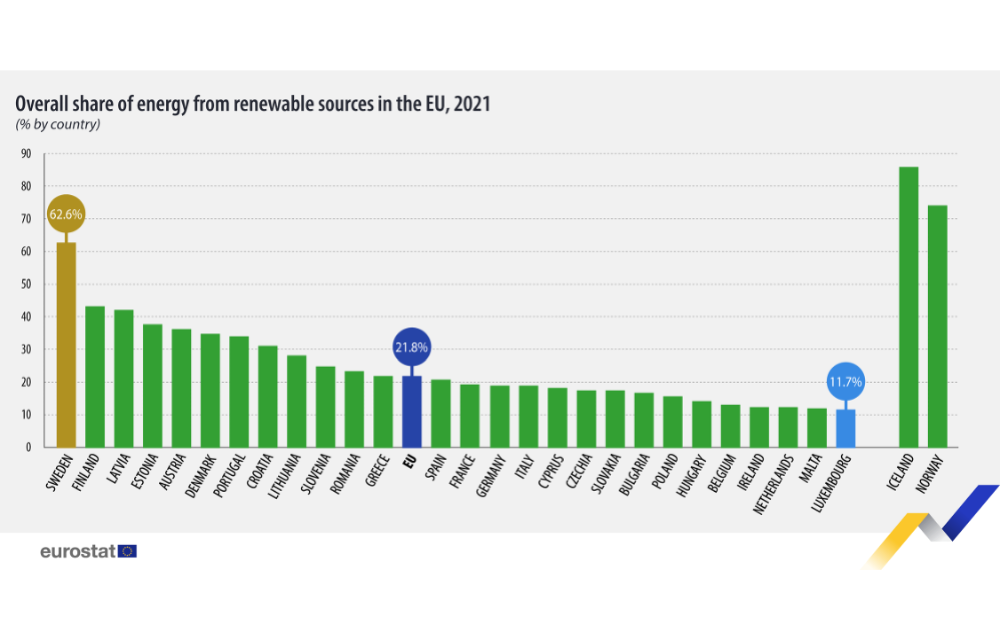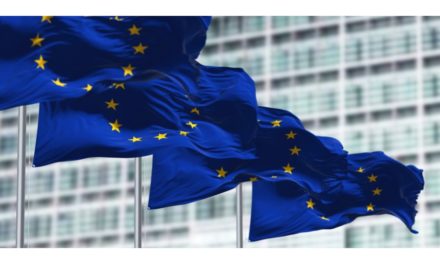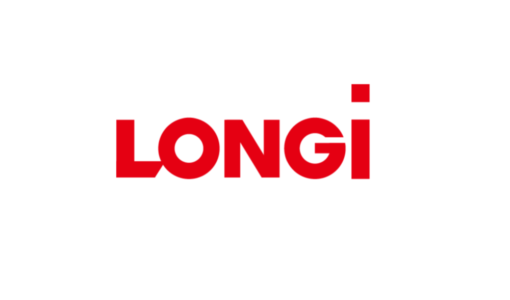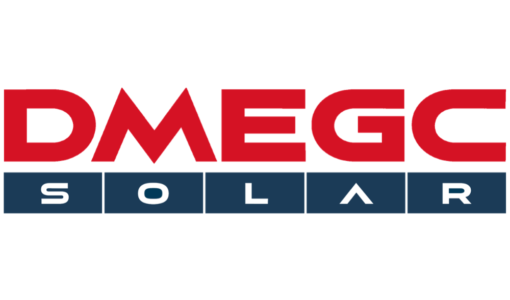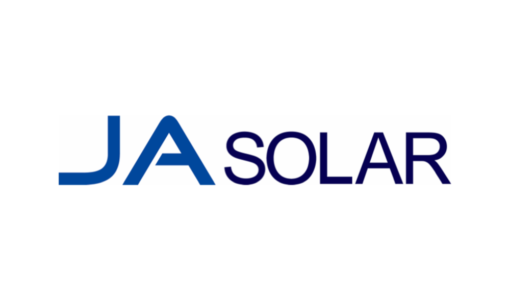- Eurostat says the share of renewable energy in EU’s gross final energy consumption in 2021 reached 21.8%
- For the 1st time, there was an annual decrease with 0.3 pp drop from 22.1% in 2020
- Solar’s share reached 15.1% compared to wind power’s 37.5% and 32.1% of hydro power
- Sweden led with 62.6% renewables share, followed by Finland’s 43.1% and Latvia’s 42.1%
The European Union (EU) will have speed up to increase the share of renewable energy in its gross final energy consumption to 45% by 2030, since Eurostat finds the share to have reached only 21.8% in 2021, with solar PV’s share is still small for the top 6 nations on the list, but it is set to grow strong.
Wind and hydro power accounted for 37.5% and 32.1% share in the renewable electricity generated, respectively between 2011 and 2021, while solar power represented a 15.1% stake, increasing from 1% in 2008 prompting analysts to call it the ‘fastest-growing source’.
According to Eurostat, “This means that the growth in electricity from solar power has been dramatic, rising from just 7.4 TWh in 2008 to 163.8 TWh in 2021.”
There was an increase in energy consumption in 2021 as COVID-19 related restrictions eased but this led to a decline in the share of renewable energy as conventional energy sources gained traction, which explains the annual drop of 0.3 percentage points (PP) from 22.1% reported in 2020. This was the ‘1st decrease ever recorded’, emphasized Eurostat.
The renewables share is also far-off from current official target of 32% by 2030, planned to be increased to 45% by the European Commission and the European Parliament (see EU One Step Closer To 45% Renewables Target For 2030).
Sweden led its counterparts in the bloc with a renewable energy share of 62.6% which is mostly a mix of biomass, hydro, wind, heat pumps and liquid biofuels. Again, it was mostly biomass and hydro power that contributed to Finland reporting 43.1% and Latvia 42.1% share.
Biomass and wind supplied 37.6% of Estonian and 34.7% of Denmark’s, while Austria’s 36.4% share came mainly from hydro and biomass technologies.
Lowest on the list are Luxembourg, Malta, the Netherlands, Ireland and Belgium with renewables share ranging between (lowest to highest) 11.7% to 13.0%.
Of the 27-member bloc, 15 reported shares below the EU average which Eurostat identifies as Belgium, Bulgaria, Czechia, Germany, Ireland, Spain, France, Italy, Cyprus, Luxembourg, Hungary, Malta, Netherlands, Poland and Slovakia.
Heating and cooling sector increased the use of renewable energy in 2021 to 22.9% in 2021, up from 11.7% in 2004, thanks to developments in the industrial sector, services and households. As for the transport sector, it used 9.1% renewable energy in the reported year as the EU eyes 14% renewables share by 2030 to come mainly from green electricity, liquid biofuels, hydrogen, biomethane, etc.
Detailed analysis of Eurostat data for 2021 is available on its website.

